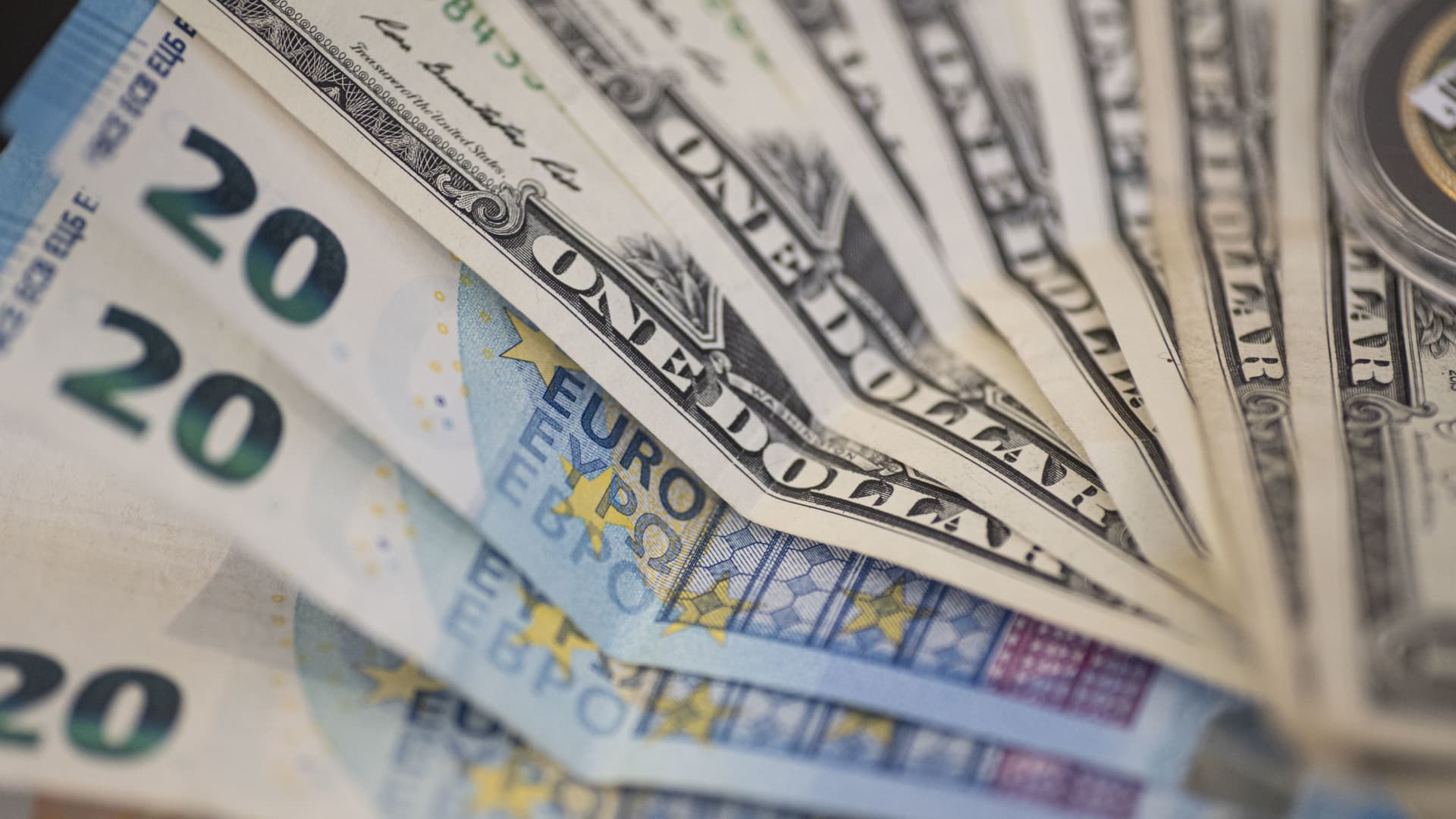Travel to many European nations looked like a bargain heading into summer and fall last year thanks to a favorable exchange rate for American tourists.
But the U.S. dollar has weakened considerably against the euro in recent months.
As a record number of Americans are expected to travel abroad this summer — with Europe atop the list of destinations — exchange-rate dynamics may make their trips more costly than it seemed in the not-too-distant past.
More from Personal Finance:
Passport delays may be four months long and could get worse
I doubled my money in Argentina with a ‘black market’ exchange rate
Travel abroad is poised ‘for a big comeback’ in 2023
“Currencies are like a marathon that never ends,” said Jonas Goltermann, deputy chief markets economist and head of foreign-exchange markets at Capital Economics. “Last year, the U.S. was just going faster and leaving everyone in the dust.
“Now, to some extent, that’s changed.”
When the U.S. dollar strengthens relative to other currencies, it means Americans can buy more abroad. Their dollar stretches further.
The euro hit parity with the U.S. dollar in July — the first time Americans enjoyed a 1:1 exchange rate with the euro since 2002.
Not all European countries use the euro — it’s the official currency for 20 out of 27 European Union members.
By the end of September, Americans could buy one euro with just 96 cents. But the U.S. dollar has lost about 14% of its value against the euro since that recent peak; Americans needed $1.10 to buy one euro as of April 4.
Let’s say a hotel room in Rome cost 200 euros a night. An American would pay $220 a night today versus about $192 in September.
“Europe for much of last year was a screaming, bargain-basement deal for Americans,” said Mark Zandi, chief economist at Moody’s Analytics. “Foreign travel for Americans is still a bargain.
“It’s just not a once-in-a-lifetime one” any longer, he noted.
It’s not just the euro, though.
The Nominal Broad Dollar Index measures the greenback’s strength against the currencies of major U.S. trading partners across North America, South America, Asia and Europe.
The index has declined about 7% from its high in late September — a “pretty substantial” decline in currency terms, Goltermann said.
A weakening dollar coincides with a record volume of international travel estimated this summer, the U.S. Department of State said in March. Demand for new passports has surged, leading to months-long processing delays, as travelers’ anxiety about pandemic health fears wane and nations ease Covid-related travel restrictions.
International trips account for about 56% of search demand among U.S. travelers, up from 46% last year, according to travel app Hopper’s Consumer Travel Index published in February. Over half of searches to international destinations are for cities in Europe (34%) and Asia (25%), Hopper said.
There are a few reasons the dollar strengthened — and subsequently weakened — relative to the euro and other currencies.
Interest rates are generally the biggest driver of currency moves, Goltermann said.
The U.S. Federal Reserve started raising interest rates in March 2022 to tame persistently high inflation. Central banks in Europe didn’t hike rates as aggressively — and the resulting differential in interest rates meant investors gravitated to U.S. bonds since they could earn more money, helping buoy the dollar, Goltermann said.
However, the Fed has signaled it’s near the end of its rate-hiking cycle, whereas rates continue to move higher in Europe and the U.K. — making the U.S. relatively less attractive to investors, Zandi said.
Meanwhile, the U.S. is generally viewed as a safe haven where nervous investors funnel their money in turbulent times. The war in Ukraine that began in early 2022 led to a general sentiment of risk in Europe, causing more money to flow to U.S. Treasury bonds. Now, much of the fallout from Russia’s invasion seems to have faded and people are somewhat less concerned than in the war’s early days, Zandi said.
A weaker dollar in 2023 coincides with travel costs that are expected to remain above pre-pandemic levels for most of 2023, according to Hopper.
Some of that price pressure is due to a dearth of available supply — of hotel rooms, airline seats and tours, for example — to meet burgeoning consumer demand.
“If you see something that works at a good price, buy it now,” said Sheree Mitchell, president and founder of Immersa Global, a tour operator that specializes in trips to Portugal. That’s because it’s unclear what will happen with supply and exchange rates in coming months, she said.
American travelers who are skittish about the euro-dollar exchange rate worsening can opt to prepay for any hotels, tours, tickets or other activities denominated in euros to lock in today’s price, Mitchell said.
Those paying for lodging and activities upon arrival would be wise to remember some common tips, Mitchell said: Use a travel credit card without foreign-transaction fees, if you have one; try to have at least two debit cards and two credit cards, especially if traveling alone, in the event of an unforeseen issue like limits on daily cash withdrawals. If using a card and offered the choice to pay in US dollars or the foreign currency, opt for the foreign currency — it will save you money, she added.
There are some risks with prepaying for a trip that’s far in the future — for example, if your travel plans change and there isn’t flexibility with your purchase, Zandi said.
He doesn’t expect the dollar to keep weakening from here through the rest of the year. It may even strengthen again, said Goltermann, who thinks some of the dollar’s recent softening has been overdone.
But recent U.S. banking turmoil could weigh on the dollar if it spreads. The U.S. risks defaulting on its debt if Congress can’t raise the debt ceiling later this year — which would almost surely bring the dollar down, Zandi said.
Ultimately, the exchange rate Americans get is far down on the list of importance when weighing travel abroad, Zandi said.
Travelers to France might be more worried about recent strikes related to pension reforms, which have disrupted air travel, for example.
“That would be more top of mind than, ‘Will the [euro-dollar exchange rate] be at $1.10,'” Zandi said.






